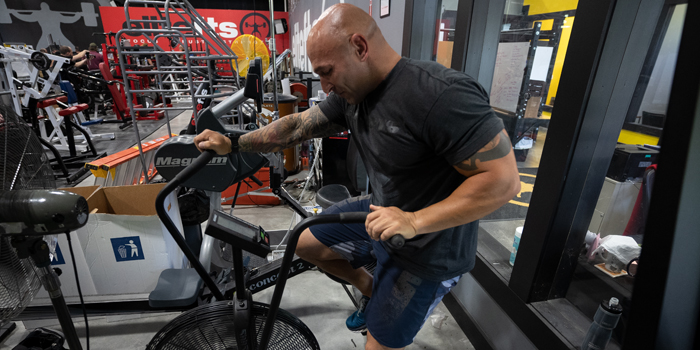
General Physical Preparedness (GPP) aims to build a stronger foundation in the body, mainly to improve recovery. Imagine that you start working in the woods as a timber man, performing hard physical work. If you start working eight to ten hours immediately, you will be completely exhausted after the end of the first working day. What if, instead, you start with a two-hour day and gradually get your body used to the load, then add a couple of hours each week?
After a while, you can work 10 hours a day and still have energy left over when the working day is over. The body has adapted and is used to a higher workload. In the same way, the body will get used to the load of GPP and thus recover better. These sessions should be about 60 percent of your capacity and last for 30-45 minutes. So, how do you know when you're at 60 percent? I used to explain to my clients that when you are at the point that you still can breathe without gasping, you're at your 60 percent. When you start gasping, you just went higher than 60 percent of your capacity.
General Physical Preparedness
GPP is thus a low-intensity, very general fitness training. I recommend training two to seven sessions of GPP a week in addition to your regular gym sessions. The more fit you are, the less benefit you have from these workouts. On the other hand, the worse your recovery and athletic status are, the more important these extra workouts are. Interestingly, most people think you have to reach a high fitness level to do these extra GPP workouts. That's wrong! You reach a higher fitness level by implementing these extra workouts!
RELATED: Poor Recovery is Holding You Back!
Try to vary the workouts as much as possible. It can be anything from pulling/pushing a sled, cycling a mountain bike, rowing a boat on the lake, playing football, swimming, heavier gardening, walking in the woods, etc. The options are indefinite. The great thing about these sessions is that it is often possible to involve the family in them. When my kids were younger, I often trained my GPP with them. For example, as my biggest son was learning to bicycle, I pushed my younger one in the baby carriage for a 30-minute jog. People say they don't have time for these extra workouts, but in 30 minutes, I had my GPP done, spent quality time with my kids, all while walking the dog at the same time.
Many say that they don't have time to train more than they do. I say, you simply have to create your own opportunities. In fact, my kids and I have spent more time together doing so. When my boy was four years old, he was playing with his cousins when he suddenly asked if they would like to flip tires. They looked at him questioningly and wondered what he meant. "Yes, shall we not train? We can't just sit here, can we?" he replied.
Special Physical Preparedness
Special Physical Preparedness (SPP) is performing specific skill work to guide it to what we should be good at. If we are about to compete in the bench press, SPP will involve more muscles and movement paths that can benefit the bench press. Here, however, I think you should be careful not to train too much and get the opposite effect. I usually enter an SPP workout the day after I have trained a max effort workout.
If I have trained a heavy upper body workout, I often train a lighter the day after, focusing on gaining volume with lighter weights. Likewise, the day after a heavy leg workout, I train a lighter volume workout with more focus on the lactic acid. In my case, I feel that I respond very well to that training approach. There must be no heavy load. On the other hand, it can feel though due to the lactic acid and the so-called pump. If we include SPP workouts in training, we can use them instead of GPP. They go under the same category of training. I think that two SPP sessions a week are enough together with two to three GPP sessions.
This reasoning is quite far from the common perception, which is often just about running the shit out of each workout and preferably being allowed to walk on crutches the day after training.
Or that if you want to get better at squats, you should only practice squats. If someone were to tell a 100-meter runner that they would just run the 100-meter and never waste energy on any other workout, what would you have said then? It's clear that the athlete assimilates the training better if he trains all the individual components that make the run successful.
Knee control, flexibility, ankle strength, torso stability, explosive movements, reaction training, and long-distance training will increase oxygenation, making recovery from shorter runs better.
After reading this article, you should:
- Know how to plan your training better.
- See different aspects of training.
- Accept that more isn’t always better!
Stefan Waltersson is a professional strength coach certified by Westside Barbell, lecturer, physiotherapist, author, personal trainer, kinesiologist, sports massage therapist, nurse assistant, and founder of Seminoff Sport & Rehab in 2004. Stefan has previously worked in neurology (Sahlgrenska University Hospital) and with researching doctors in microbiology and clinical chemistry. Check out his website.











Thanks for all the great free info!
-John
Thanks for all the great free info!
-John